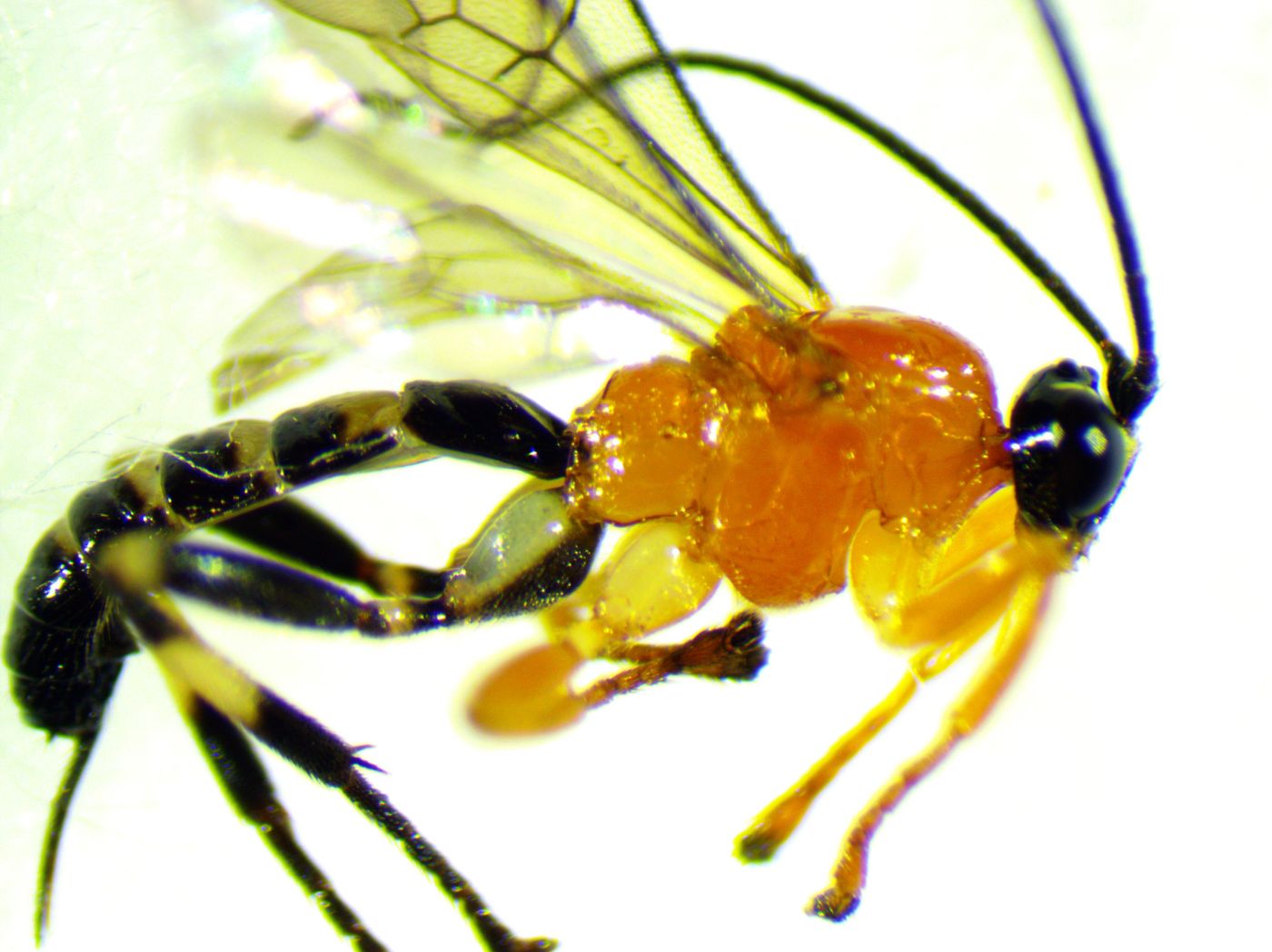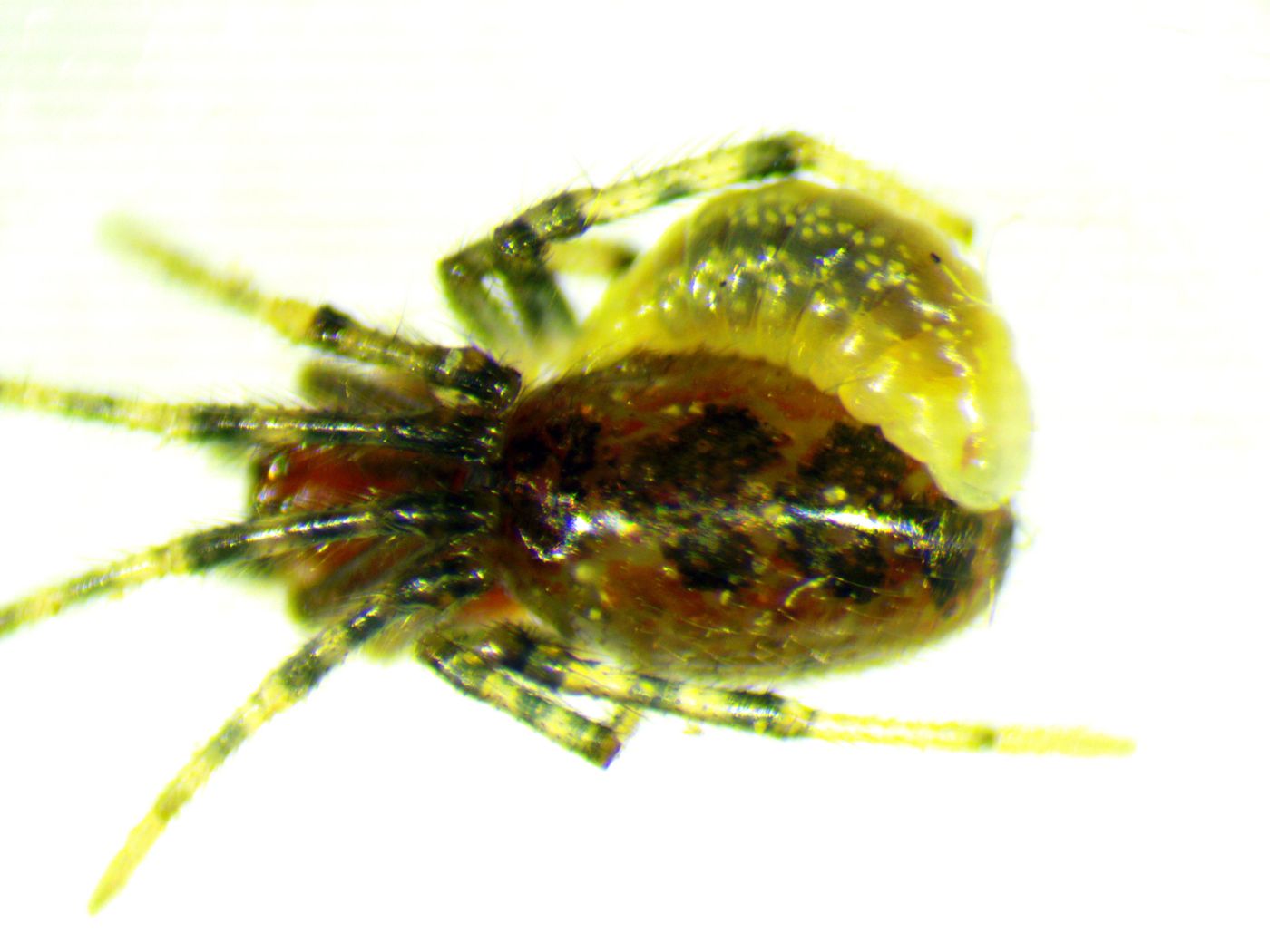Social Spiders Lose Their Minds After Meeting This Parasitoid Wasp
A curious team of researchers from the University of British Columbia was purportedly studying Anelosimus eximius spider nests in Ecuador in an effort to learn more about the different types of parasites that live among them when the team happened upon a somewhat captivating discovery.
Reporting this month in the journal Ecological Entomology, the team describes an unusual relationship involving one of the world’s 25 known social spider species and a newly-discovered parasitoid Zatypota species wasp, and it’s not what one would call a ‘normal’ relationship by any stretch of the meaning.
Image Credit: Philippe Fernandez-Fournier
Parasitoid wasps infiltrate other insect nests to feed, and the newly-discovered Zatypota species is no different. Once it penetrates the nest, it quickly chooses a victim and lays an egg on its abdomen; this egg later yields a larva that takes complete control of the spider’s mind and actions.
To the researchers’ surprise, after the larva takes control of its victim, the spider abandons its colony. It’s incredibly unusual for a social spider species to wander away from its colony, hence the “social” bit in their description.
"Wasps manipulating the behavior of spiders has been observed before, but not at a level as complex as this," explained study lead author Philippe Fernandez-Fournier. "Not only is this wasp targeting a social species of spider but it's making it leave its colony, which it rarely does."
Related: Study investigates why people like bees and hate wasps
Social spiders do more than live in the same colony; they also work together to capture prey, distribute parental responsibilities, and back one another up when needed. Spiders impacted by the parasitoid wasp larvae, on the other hand, spun silk-based cocoon webs a couple of feet away from the rest of the colony.
"It was very odd because they don't normally do that, so I started taking notes," Fernandez-Fournier added.
To learn more about what was happening inside of these cocoon webs, the researchers collected samples to dissect in the lab. Their investigation later revealed that the cocoon webs were housing wasp larvae and keeping them safe from the elements.
Image Credit: Philippe Fernandez-Fournier
As it would seem, these larvae take full advantage of the social spiders’ silk-weaving abilities to fashion a safe house for their offspring. While protected inside of the densely-crafted cocoon web, these larvae feast on the spider until they grow larger and eventually transform into fully-grown wasps.
This isn’t the first time researchers observed zombification of insects by parasitoid wasps, but it’s one of the most extreme cases they’ve ever seen.
Related: This cockroach-eating wasp controls its prey's mind before devouring it
"This behavior modification is so hardcore," said study co-author Samantha Straus. "The wasp completely hijacks the spider's behavior and brain and makes it do something it would never do, like leave its nest and spinning a completely different structure. That's very dangerous for these tiny spiders."
No one knows for sure how the parasitoid wasps take control of their hosts, but that’s something the researchers would like to figure out as research continues. Just think, if it weren’t for the abnormal behavior on the social spider’s part, then these nefarious activities may have continued to go unnoticed by science.
Source: University of British Columbia, Ecological Entomology










